 W
WAstatotilapia burtoni is a species of fish in the family Cichlidae.
 W
WAstatotilapia calliptera, the eastern happy or eastern river bream, is a species of haplochromine cichlid from southeastern Africa.
 W
WBarbodes everetti, the Clown barb or Everett's barb is a species of cyprinid fish native to Borneo and Sumatra. It inhabits clear streams in forested foothills and can also be found in forest floor puddles as shallow as 15 centimetres (5.9 in) or less. Its diet consists of small crustaceans, worms, insects and plant material. This species can reach a length of 15 centimetres (5.9 in) TL. It can also be found in the aquarium trade.
 W
WCoccorella atrata is a species of sabertooth fish. It is a deepwater species found at depths of 300–2,626 m in the Indian and Pacific oceans.
 W
WCtenochromis horei is a species of haplochromine cichlid which is found in East Africa.
 W
WCynotilapia afra, the afra cichlid or dogtooth cichlid, is a small species of cichlid fish from Lake Malawi in East Africa, where found in rocky habitats.
 W
WGoodea luitpoldii, the green goodea, is a species of killifish from the family Goodeidae which is endemic to the drainage basin of the Lerma River and the Grande de Santiago River in Mexico. This species was Species description described as Characodon luitpoldii by the Franz Steindachner in 1894 with the type locality given as Lake Pátzcuaro in Michoacán. The identity of the person honoured in its specific name is unknown but it is thought likely to be Luitpold, Prince Regent of Bavaria (1821-1912) whose daughter, Princess Therese of Bavaria (1850-1925) was an explorer and amateur naturalist and she collected the type.
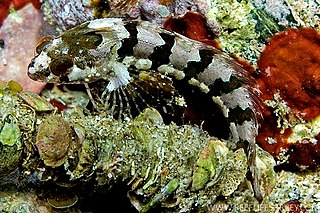 W
WHeteroclinus whiteleggii, Whitelegg's weedfish, is a species of clinid native to reefs around New South Wales, Australia. This species can reach a maximum length of 10 centimetres (3.9 in) TL. The specific name honours the naturalist Thomas Whitelegge (1850-1927) who was a friend of Ogilby's friend and who collected the type.
 W
WThe kampango or kampoyo is a critically endangered species of large and predatory bagrid catfish that is endemic to Lake Malawi, Lake Malombe and the upper Shire River in Africa. It prefers areas near rocks in water shallower than 50 m (160 ft), but it also occurs deeper and over a sandy or muddy bottom.
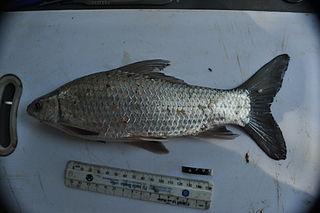 W
WLabeo rosae, the rednose labeo, is a species of fish in the genus Labeo which is found in the Limpopo River, Incomati River and Pongolo basins in southern Africa.
 W
WLethrinops lethrinus is a species of cichlid native to Lake Malawi and western shore feeder streams, Lake Malombe and the upper reaches of the Shire River. It prefers areas in the lakes that are near to river outlets This species grows to a length of 20 centimetres (7.9 in) TL. It can also be found in the aquarium trade.
 W
WNimbochromis livingstonii, Livingston's cichlid or (locally) kalingono, is a freshwater mouthbrooding cichlid native to Lake Malawi, an African Rift Lake. It is also found in the upper Shire River and Lake Malombe. They are found in inshore areas of the lake over sandy substrates.
 W
WOreochromis tanganicae, the Tanganyika tilapia, is a species of cichlid endemic to Lake Tanganyika and the mouths of its larger affluent rivers. This species can reach a length of 42 centimetres (17 in) SL.
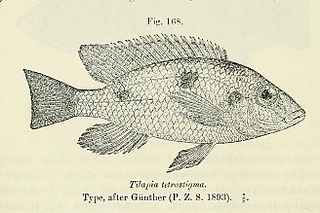 W
WOtopharynx tetrastigma is a species of cichlid native to Lake Malawi, Lake Malombe and the upper reaches of the Shire River. This species can reach a length of 16 centimetres (6.3 in) TL. It can also be found in the aquarium trade.
 W
WThe Penang betta is a species of gourami native to Southeast Asia and common in swiftly flowing forest streams of the Malay Peninsula, Thailand, Sumatra, and the Riau Islands. In addition to its native range, the species has been introduced to Guam. It can be found amongst the vegetation growing along the banks. This species can reach a length of 6.7 centimetres (2.6 in) SL. It is one of the mouthbrooding Betta species. This species, as a natural predator of mosquito larvae, has found use in mosquito control efforts. Prior to its being eclipsed in Western public recognition by the mass-imported B. splendens, B. pugnax was well known as a fighting fish, as denoted by the specific epithet of pugnax, attracting the interest of scientists studying animal behaviour at least as long ago as the 1880s.
 W
WPlacidochromis johnstoni is a species of cichlid native to Lake Malawi, Lake Malombe and the upper reaches of the Shire River where it prefers shallow waters with plentiful vegetation. This species can reach a length of 20 centimetres (7.9 in) TL. It can also be found in the aquarium trade. The specific name honours the British explorer, botanist, artist, colonial administrator and linguist Sir Henry Hamilton Johnston, better known as Harry Johnston, who collected the type and sent it to the British Museum.
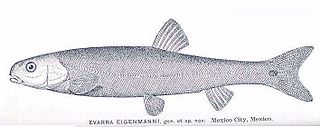 W
WThe plateau chub is an extinct species of ray-finned fish in the family Cyprinidae. It was found only in Mexico.
 W
WPoecilia parae is a species of fish from the family Poeciliidae which is found in northern South America from Guyana to the mouth of the Amazon River.
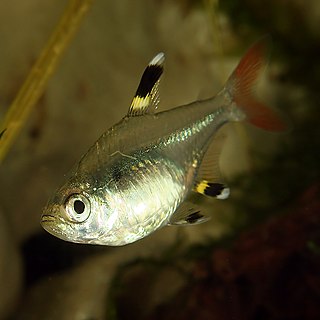 W
WPristella maxillaris, the only species in the genus Pristella, is commonly known as the X-ray fish or X-ray tetra because of its translucent body. It is a widely distributed and adaptable fish, found in the Amazon and Orinoco basins, as well as coastal rivers in the Guianas in both acidic and alkaline waters. Unlike most other characins, it is tolerant of slightly brackish water. It is small and lives in large groups, and males can be distinguished from females by being smaller and thinner than the females. Like most other tetras, it feeds primarily on small insects and planktonic animals.
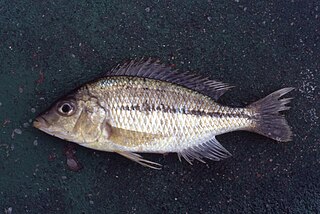 W
WProtomelas kirkii is a species of cichlid endemic to Lake Malawi where it is most commonly found in areas vegetated with Vallisneria. This species can reach a length of 18 centimetres (7.1 in) TL. This species can also be found in the aquarium trade.
 W
WThe red top williamsi is a species of cichlid endemic to Lake Malawi where it occurs in areas with rocky substrates usually at depths of less than 2 metres (6.6 ft). This species can reach a length of 16.5 centimetres (6.5 in) TL. It can also be found in the aquarium trade. The specific name honours the Anglican missionary Joseph A. Williams who died by drowning in Lake Malawi in 1895, with Bishop Chauncy Maples, and who collected the type of the cichlid among others.
 W
WThe redfin bully is a species of freshwater fish in the family Eleotridae endemic to New Zealand. Being amphidromous, it spends part of its life cycle at sea. Males have distinctive bright red patterns and stripes on their fins. Adults grow to an average of 80–100 mm (3.1–3.9 in) total length, with a maximum of 120 mm (4.7 in).
 W
WThe reticulate sculpin is a species of fish in the family Cottidae. It is found in the United States, inhabiting Pacific Slope drainages from the Snohomish River and Puget Sound in Washington to the Rogue River system in Oregon and California. It reaches a maximum length of 10.0 cm. This sculpin occurs in a variety of habitats, but mainly occurs in the slower sections of coastal headwaters, creeks, and small rivers. It prefers faster water with rubble or gravel substrate, but occurs in pools and along stream edges when other sculpin species are present. Often it occurs in clear cold water in forested areas. It's ideal habitat is cold creeks in old-growth forest, with plenty of riffles and runs. This species is tolerant of variable water temperatures and salinities. Where other sculpin species are common, spawning occurs in slow-flowing areas; where other sculpin species are rare or absent, spawning usually occurs in riffles.
 W
WSebastes dallii is a species of fish in the rockfish family in the Eastern central Pacific. It is commonly known as the calico rockfish.
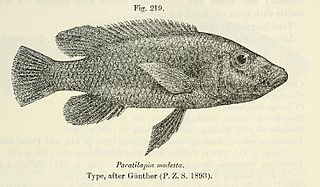 W
WStigmatochromis modestus is a species of cichlid endemic to Lake Malawi where it lives among rocks. It is an ambush predator, feeding on other fishes. It can reach a length of 25 centimetres (9.8 in) TL. It can also be found in the aquarium trade.
 W
WUmatilla dace is a species of ray-finned fish in the genus Rhinichthys. It is found in the dariange basin of the Columbia River in British Columbia, Washington state, Oregon and Idaho.
 W
WThe Wood River sculpin is a species of fish in the family Cottidae. It is endemic to the Big Wood and Little Wood rivers and their tributaries upstream of Magic Reservoir in Blaine County, Idaho in the United States. Its habitat is similar to other sculpins: small to medium-sized streams that are cool and have swift currents. It is a species of concern because of its restricted distribution.